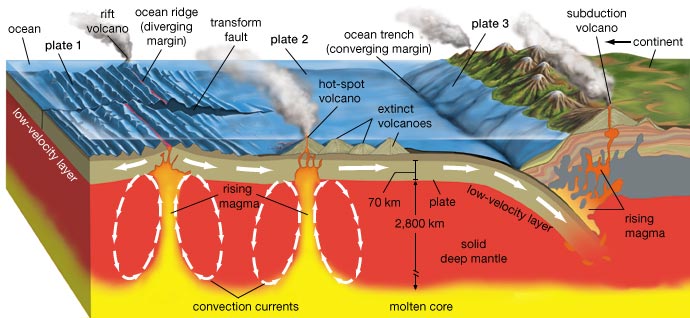Standard Model
© Charles ChandlerA good overview of the standard model of geology is given in Figure 1. Much of this "understanding" has emerged only within the last couple of decades, and there is still a lot that doesn't make sense.For example, the image shows large pressure ridges at the mid-ocean rift, which would be expected if magmatic pressure was pushing the tectonic plates apart. But under such stress, the entire plate should buckle. In actuality, the ridges are much smaller than shown, and are only evidence of uneven rates of magma flow.Also, the oceanic plate is shown as being subducted deep under the continental plate. This is assumed to be convection, since the crust should have cooled in the many millions of years that it took to travel all of the way from the mid-ocean rift. Thus it should be cooler, and therefore heavier. But temperatures in subduction zones are actually considerably higher than at the mid-ocean rifts. Furthermore, subduction volcanoes are said to be formed by the buoyant magma pulled down with the subducted plate. So which is it... is the oceanic plate diving down because it is heavier, or is it lighter material that can bubble up all of the way through the mountain roots, and erupt in volcanoes? It can't be both.











